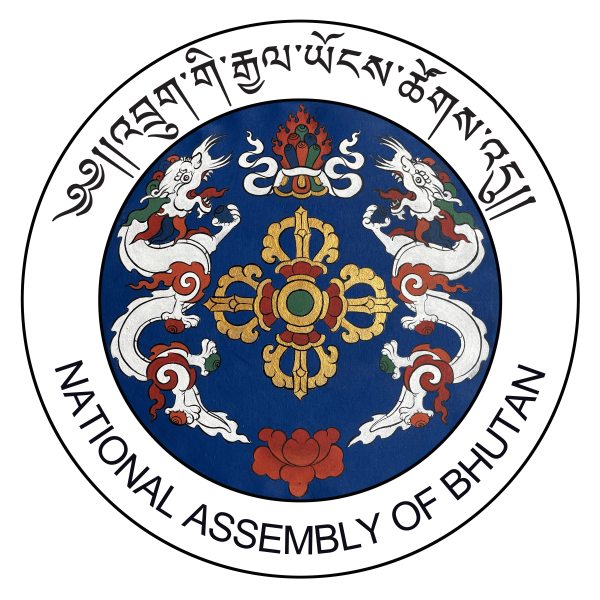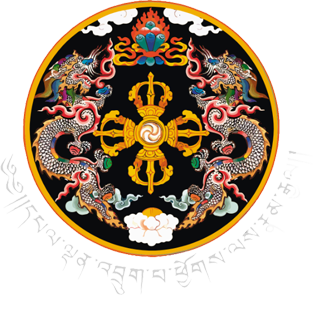About
National Assembly of Bhutan
The National Assembly is one of the two chambers of Bhutan’s bi-cameral legislature, which together with the Druk Gyalpo, makes up the Parliament of Bhutan.
The two chambers were established in 2008 under Articles 11 and 12 of the Constitution of the Kingdom of Bhutan, after held its first general election to establish Parliament and form government.
The National Assembly has 47 members elected from the 47 constituencies in the country. The members belong to either the ruling or opposition party. The Constitution has a provision for the National Assembly to have a maximum of 55 elected members in proportion to the country’s population.
Elections
Elections to the National Assembly take place in two tiers: the primary round and the general election. Political parties registered with the Election Commission of Bhutan contest the primary round. The two political parties that get the highest and second highest votes in the primary round contest in the general round. The party that gets the most seats forms the government, and the other party takes the opposition berth.
In the first general election in 2008, the Druk Phuensum Tshogpa (DPT) formed the government with the People’s Democratic Party (PDP) as the opposition.
In the 2013 general election, the PDP formed the government, with the DPT as the opposition. In the third Parliamentary election held on October 18, 2018, the Druk Nyamrup Tshogpa (DNT) formed the government with 30 seats, and the DPT became the opposition with 17 seats. The tenure of the National Assembly is five years.
Functions
The Assembly has legislative, representative, and oversight functions. Most of the proposed laws in Parliament originate in the National Assembly. As the main law-making body, the Assembly deliberates, amends, repeals, and passes laws. Members can initiate legislation besides bills introduced by the executive government.
Assembly members represent the people in Parliament by voicing their concerns when laws and policies are being formed and keeping the people informed of Parliament decisions and government development programmes through regular constituency visits.
The Assembly exercises its oversight functions by questioning government ministers and reviewing policies to ensure that public funds have been utilized for the intended purpose. It also collaborates with other oversight institutions, such as the Royal Audit Authority and the Anti-Corruption Commission, that monitor government performance.
Sittings
The National Assembly meets twice a year, in summer and in winter, but can meet more often if commanded by the Druk Gyalpo.
Each sitting of Parliament commences and closes with the Druk Gyalpo being received by members of the Assembly and the Council and taking place in the National Assembly hall. Each sitting normally lasts for a month; however, the duration depends on the agenda. The sessions begin at 10 in the morning and adjourn at 1:30 p.m. All proceedings are conducted in Dzongkha, the national language, and in public.
Joint sessions take place when there is a dispute over a proposed law from either of the houses. The Speaker of the National Assembly presides over the joint sitting, which is held in the National Assembly hall. Disputes are usually resolved by appointing a committee comprising members from both houses and by a final vote taken during the joint session.
Seating Plan
The member’s seating in the Assembly’s debating chamber is U-shaped and faces the raised desk from where the Speaker presides over the deliberations. The Speaker’s chair is directly below the Golden Throne (Serthri). When the house is in session, the Speaker presides over the deliberations, flanked by the Secretary General to the right and the director to the left.
The seating of members is in the alphabetical order of their dzongkhags. The first row of the Assembly Hall is designated for the prime minister, opposition leader, and cabinet ministers.
The Assembly Hall is designed to seat 100 members, and joint sessions of Parliament are held here.
Parliament Building
The Parliament of Bhutan is located on the left bank of the Wangchu river opposite the Tashichhoedzong in Langjophakha, Thimphu.
The main parliament building (Gyelyong Tshokhang), which houses the National Assembly, is one of the largest modern structures in the capital. Built in traditional architectural style with stone and intricate woodwork, the rectangular structure has towers at its four corners and encloses a cobbled stone courtyard. Most of the space on the ground floor is dedicated to the ornate assembly hall, which has seating for members as well as VVIPS, diplomats, and the public.
Besides the offices of the National Assembly Speaker, the secretary general, and the Assembly secretariat, the Parliament building also houses the offices of the prime minister, the opposition leader, and the foreign ministry.



